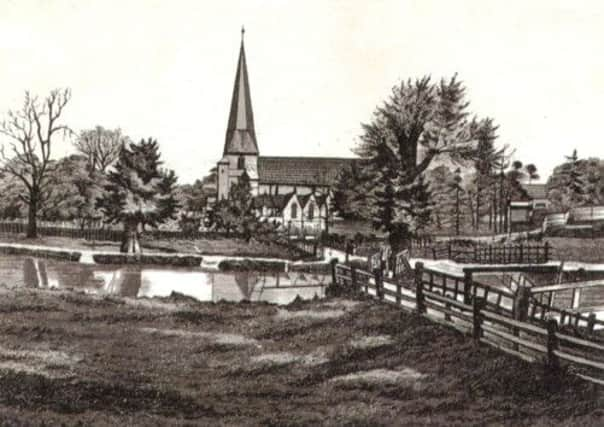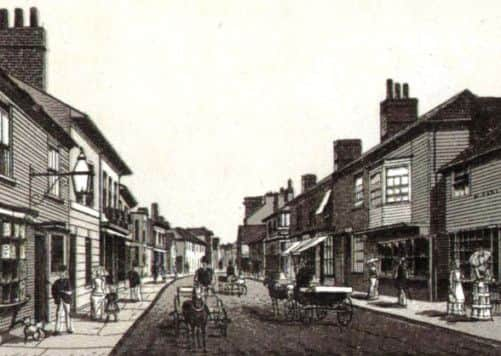Horsham’s response to measles epidemic


The following edited highlights are taken from Volume 3 Horsham History by Jeremy Knight.
The year 1886 saw Horsham hit by periodic bouts of illness affecting a large number of children. For this particular epidemic the illness was known and named and the Parish Magazine sets out a response to it by the community, something that had not happened before.
Advertisement
Hide AdAdvertisement
Hide AdOn Valentine’s Day 1886 the Vicar in his sermon ‘alluded to the prevailing epidemic of measles (following whooping cough and often resulting in bronchitis and lung inflammation) among the children. The ordinary funds of the Church for the sick and poor relief proved quite unequal to the exceptional strain caused by the epidemic, and had been in fact already very severely taxed by the ordinary sickness of the previous winter months’.


The Vicar called for the raising of a special fund. Within a day most of the £38 5s 2d had been raised, by 22nd February £62 15s 2d, and by the publication of the April magazine the fund had risen to £89 17s 2½.d. It also included ten tons of coal from Mr Agate, blankets from various people, brandy from Messrs King, ‘jellies and rabbits from various friends’ (though later the accounts would identify ‘18 couples of rabbits from R. Henderson, ten couples from W. E. Hubbard and six couples from PercyGodman’), ‘flannel garments for the sick children’ from a number of ladies as well as toys from Mrs Richardson.
The way the fund was administered was set out in the March magazine. The distribution of aid was given to the clergy who ‘endeavoured to discharge what is always a most difficult and delicate task with the utmost possible prudence, equity, and care.
‘The following principles have guided them throughout their work:
Advertisement
Hide AdAdvertisement
Hide Ad‘1. Money, in the shape of cash, has not been given in a single instance.
‘2. The entire staff of Medical men in Horsham were duly consulted before any distribution was made.
‘3. The relief was personally distributed by the Clergy, their wives, and some of the District visitors; and consisted the following items: (i) Orders... for coal, grocery, milk, and beef tea; (ii) in some cases, blankets were given; in others they were lent for temporary use. Some clothing in the shape of the most necessary garments for infants and little children has, in not a few cases, been given.
‘4. The relief has, so far as was practicable, been confined to those whose families were suffering from the epidemic.’
Advertisement
Hide AdAdvertisement
Hide AdThe report then identifies the extent and scope of the care up to February 24 some ten days after the Vicar’s plea. The areas were broken up into districts relating to each of the ministers in charge.
In addition to this ‘In the eastern district of the town (comprising six districts of visitors) - Brighton road, St Leonard’s Road & c., beef tea has been provided, under the supervision of Miss Elms, for 242 children (between Feb. 17 and 23rd), and dinners for convalescent children have been provided, in the same period, to the number of 99’.
The measles epidemic of 1886 that hit Horsham led to a questioning of the work of the Local Board in spending the money on the new drainage of the town, as shown by the debate suggested by the publican of the Crown inn Mr Turner in his letter to the Mutual Improvement Society.
A History of Horsham Volume 3 is available from Horsham Museum for £12.50.
Advertisement
Hide AdAdvertisement
Hide AdPictured here, scenes of Horsham in 1886 showing St Mary’s, the parish church, and East Street.
Horsham District Council’s Horsham Museum & Art Gallery, 9 Causeway, Horsham – open Monday to Saturday 10-5pm www.horshammuseum.org